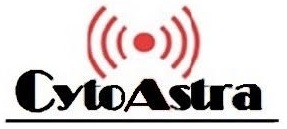THE PLATFORM
Problems with Testing for Early Diagnosis
The problem with conventional blood tests is that the limited sample volume collected (≤ 5-10 ml) sometimes leads in not identifying biomarkers in the whole blood pool (up to 5 liters). As a result, undiagnosed diseases can quickly progress to difficult to treat and manage later stage diseases such as metastasis.
CytoAstra solves this problem through the identification of rare biomarkers by examining large volumes of blood (0.5-1 liters) in vivo using the photoacoustic (PA) flow cytometry (PAFC) platform.

The laser light penetrates through intact skin to the peripheral vessels, generating sound from circulating biomarkers:
- Melanin in melanoma CTCs
- Hemozoin in malaria-infected erythrocytes
- Cytochromes or hemoglobin in so called white and red clots.

The CytoAstra platform has been developed for real-time detection and counting fast-moving biomarkers and other abnormal cells in the blood flow. The specialized software, with time-resolved high speed signal processing algorithms, making the data tolerant to skin pigmentation, motion, and other artifacts.
